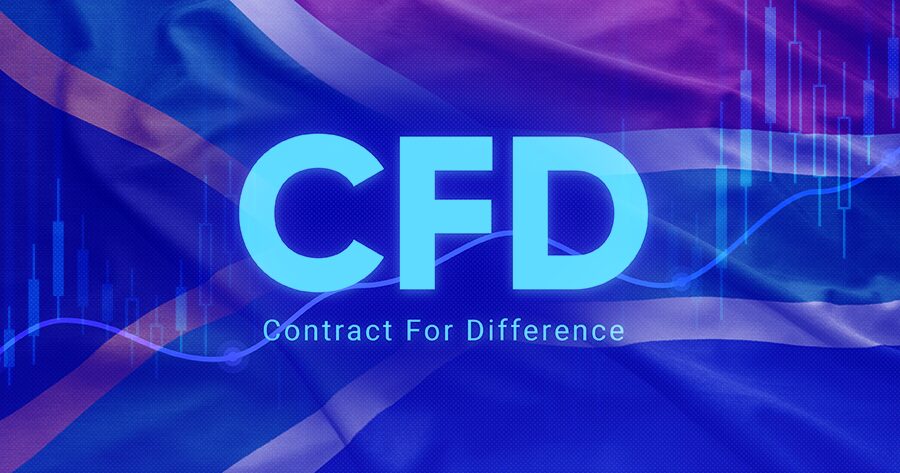CFD, or Contracts for Difference trading, simply refers to traders speculating on the price movements of a variety of assets, including commodities, indices, cryptocurrencies, stocks, and Forex. This type of financial derivative is unique because it allows a trader to trade the underlying price movements without actually owning the asset.
Acquiring or selling a CFD means exchanging the difference in asset price from whenever your position is opened to whenever it’s closed. This comes with its pros and cons. CFD trading is a complex and risky game, so only expert traders with strong risk management strategies are best-suited for it.
Knowing market trends, risk management, and technical analysis is crucial for a successful CFD trade. While the world of CFD trades can be slightly tricky to navigate, this financial derivative offers flexibility. Traders can go long or short, enabling them to benefit from rising or failing markets.
Let’s take a look at some of the essentials of CFD trading.
Go Long or Short with CFDs
When you are dealing with CFDs, what you are essentially doing is making an educated guess about whether an asset’s value will increase or decrease. If you think the price movement will take a sharp upward turn, you can buy it beforehand. This is called “going long”. However, if you think the price will decrease, you can “go short”, which refers to selling the asset. Since you do not own the asset, you’ll not really be buying or selling, and instead you will just be trading in CFDs.
The outcome of your guess will determine whether you benefit or lose finances from this trade. It’s crucial to remember that both going long or short can incur a loss, and you need to understand exactly how Contracts for Difference trading works before you open a position. You must also plan ahead and implement a risk mitigation and management strategy.
If your speculation hits the mark, you will make a profit that is reliant on your total position size. This amount usually exceeds the cost of the initial margin that you paid to open the CFD trade. However, if your prediction is inaccurate, you’ll be incurring a loss. This loss is also based on your overall position, and you can lose much more than what you initially invested to open the trade. This is why experienced traders always ascertain that they’re trading within their means, and take the best-suited risk management steps they can.
Leverage in CFD Trading
You can stretch your finances a whole lot with CFD trading, as you only have to pay a small percentage of the full market value of an asset to open a position. This fraction amount is called the margin. Although the cost of opening a trade is low, it can be quite risky because your losses will be amplified. If you incur a loss, you will be losing a lot more capital than you had initially invested in the margin cost. The profits and losses of this kind of trading are mainly calculated on the overall size of your trade position.
The initial margin cost is based on the size of your position and the margin factor for the current market of your chosen asset. For example, most cryptocurrencies have a margin of 50%, whereas most Forex assets have a margin of 3.33%. There are a number of online CFD calculators available that can help you calculate the margin requirement, as well as the potential for profit or loss, for a specific trade.
One of the fundamental things you need to keep in mind before you open a trade is that your total profit or loss is not dependent on your initial cost spent, but on the full size of your position. If you want to open a Contracts for Difference trade on 50 Apple shares, which are 800 US dollars per share, you would only need 8000 US dollars to get in on a 40,000 US dollars position. Your margin cost is only 20% of the total 40,000 US dollars trade value. But remember; your profits or losses will be calculated on the full amount of 40,000 US dollars, not the 8000 US dollars margin.
One of the flexibilities that CFD trading allows you is that you can choose any market that appeals to you and aligns with your finances. For shares in Tesla, a deposit amount of 20% of the overall position size is required. Meanwhile, for most popular indices, only a 5% margin cost will do.
Trade in a Variety of Markets
With CFD trading, you can target a vast array of markets. You can deal with ETFs and the world’s top indices and trade in all sorts of Forex pairs, commodities, and cryptocurrencies. Experienced traders are also free to trade certain market assets outside of trading hours, capitalizing on the latest political events and the economic climate. If you keep your ear to the ground, you can get in the know of current global events and central bank decisions. So even when traditional exchanges are closed, you can keep an eye out for the news and open a trade that aligns with your knowledge, interests, and financial goals.
Diversifying your CFDs across multiple venues will also reduce the risk involved. Whether you want to try your luck with Forex pairs or take on a challenge with the volatile nature of cryptocurrencies, CFD trading provides you with a dynamic and flexible way of interacting with the financial market.
Is CFD Trading the Right Choice
If you are on the lookout for a way to trade rising or falling assets, and you want to open a trade using a small amount of capital, then CFD trading is the perfect choice for you! Most people choose to trade in Contracts for Difference because the initial outlay is only a small fraction of the value of your full trade size, but CFD trading has a number of other pros too.
For one, you can choose to go long or short with CFDs. This means you can open a trade no matter which direction a market share moves in. Whether the market is in a sharp decline or steadily rising upward, you can do your research and open a position either way. CFD trading also comes with a few tax benefits. You can also hedge your funds, which allows you to offset some of your financial losses against your profits.
Additionally, CFD trading works best if you already have some prior market knowledge. If you understand the technical analysis, trading strategies, and price movements associated with the market assets, this financial derivative might be right for you. Because CFDs are leveraged products, traders also have to be on board with taking a few risks. Employing risk management strategies beforehand is the way to go! You need to ensure that you can handle the loss before you invest in opening a trade.
Another boon of CFD trading is that it is ideal for those to prefer short-term trading. CFDs are usually used for day trading, not long-term investments.
How to Become a CFD Trader?
To step foot into the world of CFD trading, it is crucial to understand precisely how CFDs work. In essence, CFDs are based on the underlying market. Not only can you open a trade in a market that is rising in price, but you can also open a trade in a market that’s decreasing in value. If you trade smartly, you will be able to make a profit off of both.
Before investing in a CFD, you also need to learn how profit and loss work in CFD trading. To calculate the profit or loss from a specific trade, you have to multiply your overall position, which is the number of your shares, with the value of each contract. Then, you have to find the product of that figure and the difference between the price when you opened the trade and when you closed it. It sounds complicated, but once you master the art of making these calculations, CFD trading will be a piece of cake for you.
Once you’ve made the decision to acquire the shares of a specific market, you are all set to go. If you think the value of this asset will fall, you would go short and sell it, but if you believe the price would climb, you can go long instead. You will need to monitor your open positions the whole time you’re in possession of them to view the market stats and other financial conditions.
Conclusion
To sum up, CFD trading takes a ton of knowledge, skill, and practice. You need to be up-to-date with the best financial strategies before you can open a position. Once you are confident in your trading skills and comfortable with a certain amount of risk, the route to CFD trading is wide open for you!







